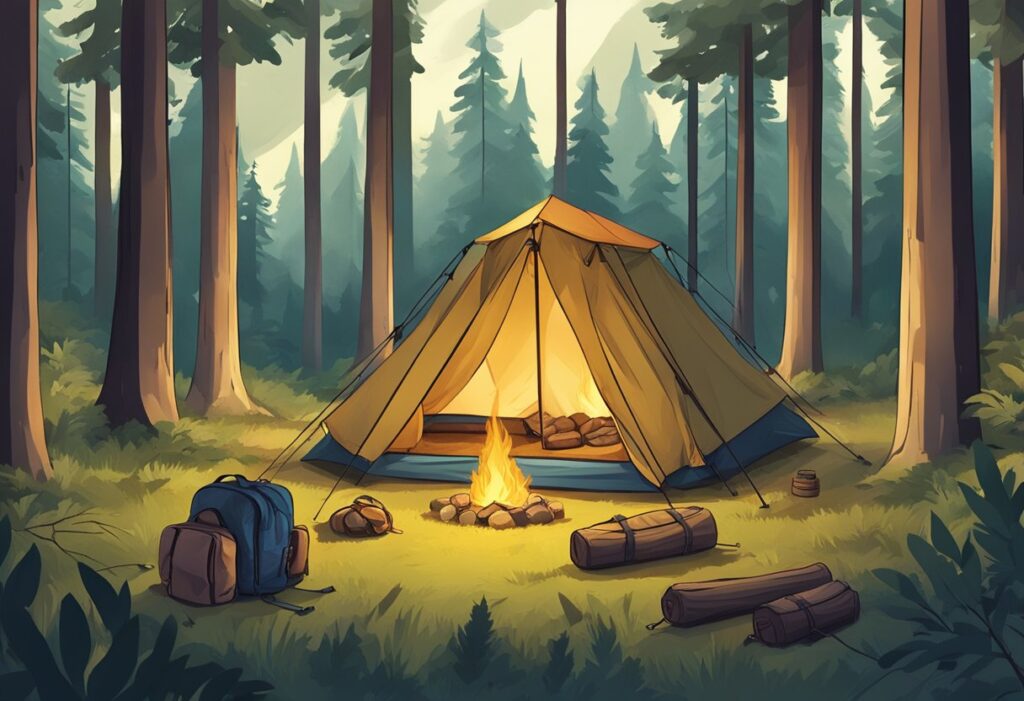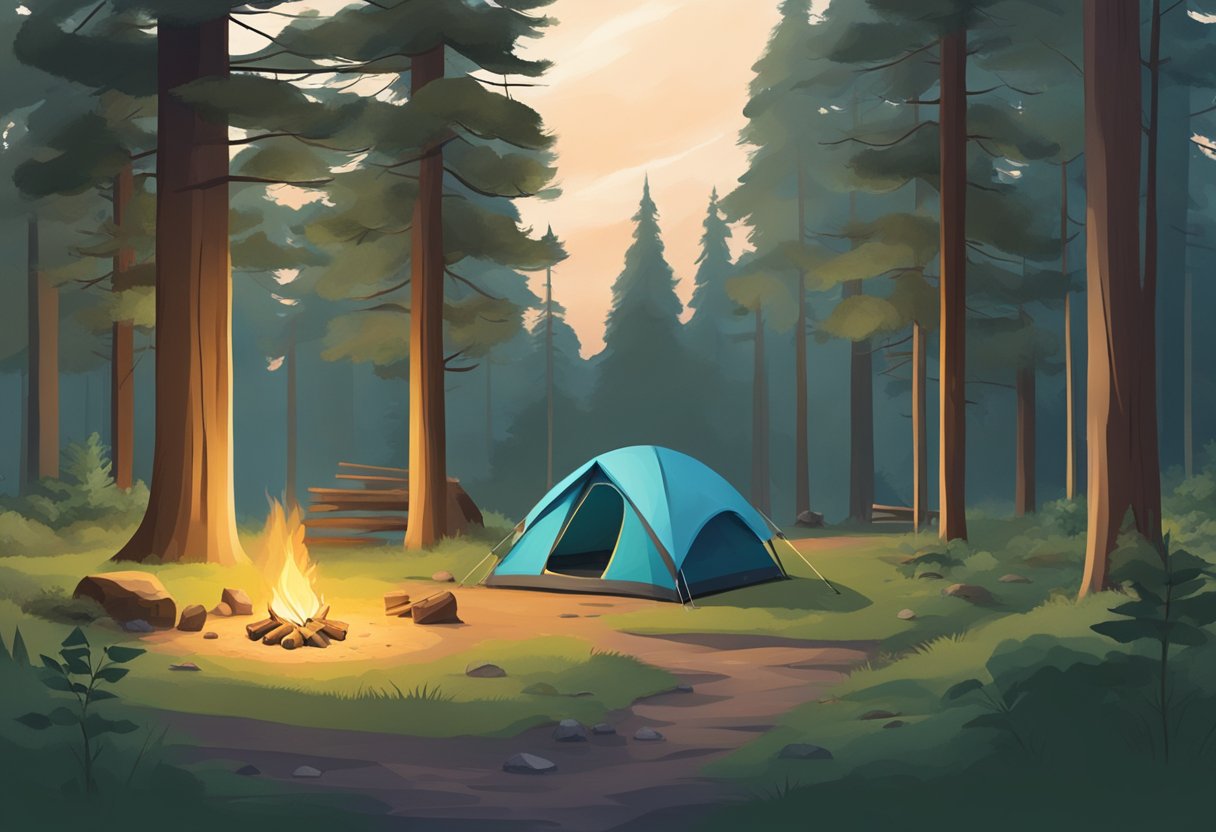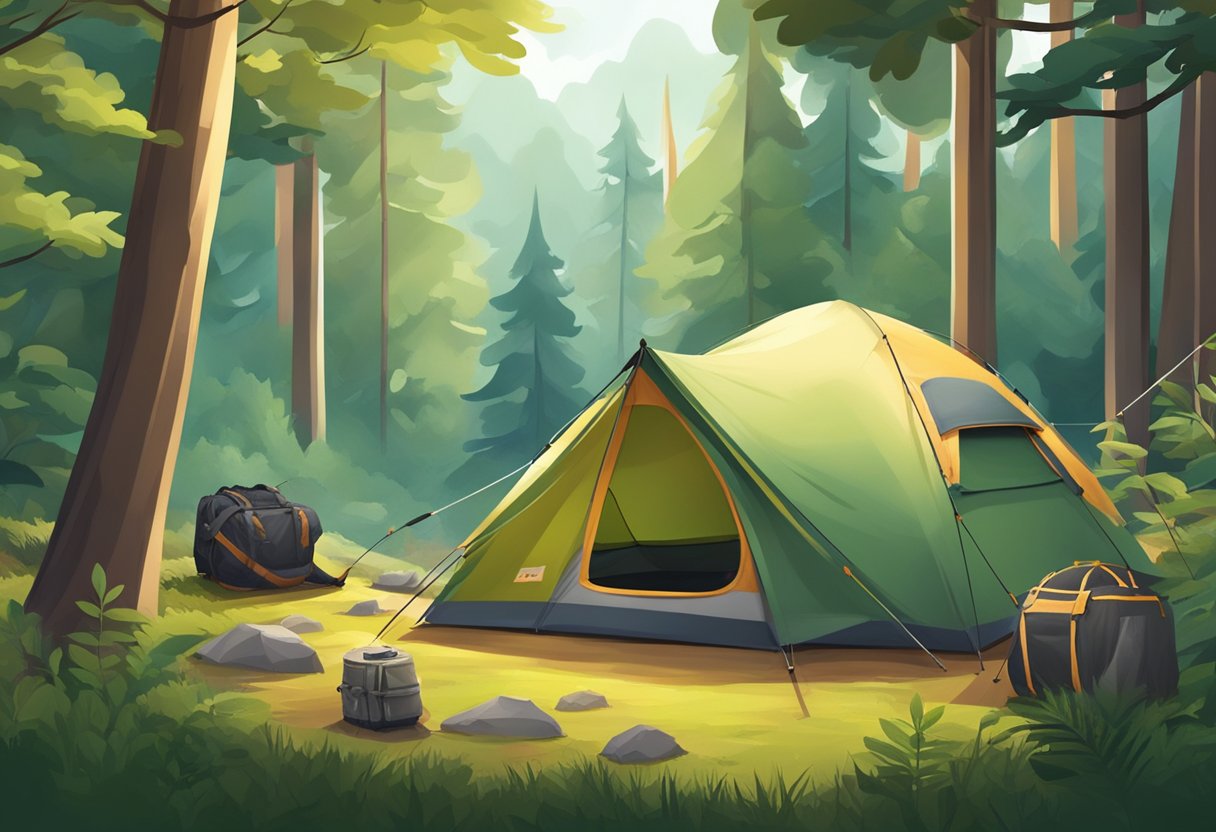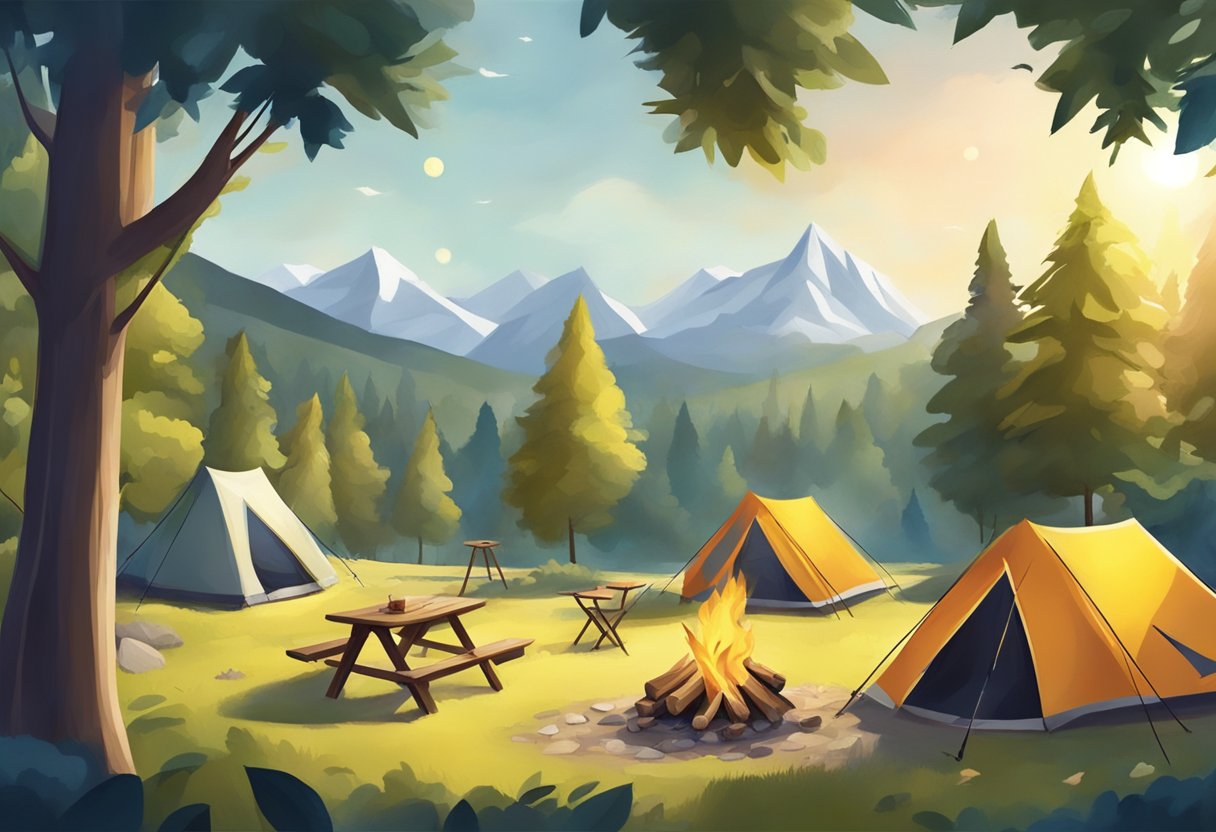Dispersed camping is becoming increasingly popular among outdoor enthusiasts who want to experience nature in a more secluded and adventurous way. However, not everyone is familiar with the term, and many may be wondering what dispersed camping actually means.

In simple terms, dispersed camping refers to camping outside of designated campgrounds on public lands such as national forests or BLM land. Unlike traditional camping, which often involves staying at a designated campsite with amenities such as running water, restrooms, and fire pits, dispersed camping allows campers to explore and set up camp in more remote areas, away from the crowds.
While dispersed camping offers a unique and exciting way to experience the outdoors, it is important to note that it requires a certain level of self-sufficiency and responsibility. Campers must bring their own water, food, and supplies, and must also be mindful of Leave No Trace principles to minimize their impact on the environment. With the right preparation and mindset, dispersed camping can be a rewarding and unforgettable way to experience the great outdoors.
Understanding Dispersed Camping

Definition and Concept
Dispersed camping is a term used to describe camping outside of designated campgrounds on public lands such as national parks, wilderness areas, and lands managed by the Bureau of Land Management (BLM) and Forest Service. Essentially, it is primitive camping with no amenities or facilities, and campers must bring their own water, food, and shelter. Dispersed camping is a great way to escape the crowds and enjoy the natural beauty of the outdoors.
Legal Aspects and Permissions
Dispersed camping is legal on most public lands, but campers must follow specific regulations and obtain necessary permits. These regulations vary depending on the location and the agency that manages the land. For example, the BLM allows dispersed camping for up to 14 days at a time, while the Forest Service allows up to 16 days. Campers should always check with the appropriate agency for rules and regulations before setting up camp.
Comparing Dispersed Camping to Designated Campgrounds
Dispersed camping offers several advantages over designated campgrounds. For one, it is usually free. Additionally, dispersed camping allows campers to choose their own campsite and enjoy more privacy. However, there are also some disadvantages to dispersed camping. Since there are no amenities or facilities, campers must bring their own water, food, and shelter. Additionally, dispersed camping is not allowed in all areas, and campers must follow specific regulations and obtain necessary permits.
In summary, dispersed camping is a great way to enjoy the natural beauty of public lands while escaping the crowds. However, campers must follow specific regulations and obtain necessary permits, and bring their own water, food, and shelter. By doing so, they can enjoy a unique and rewarding camping experience.
Preparation and Gear

When preparing for dispersed camping, it is important to consider the necessary equipment and gear to ensure a safe and comfortable experience. This section will cover the essential equipment for dispersed camping, choosing the right location, and water and food considerations.
Essential Equipment for Dispersed Camping
When camping outside of designated campgrounds, it is important to bring all necessary gear. This includes a tent, sleeping bag, sleeping pad, stove, cooking utensils, and a first aid kit. It is also important to bring a flashlight or headlamp, as well as extra batteries.
When choosing a tent, it is important to consider the size and weight, as well as the weather conditions. A four-season tent is recommended for camping in colder climates, while a three-season tent is suitable for milder weather. It is also important to consider the material of the tent, as well as the ease of setup.
Choosing the Right Location
Choosing the right location for dispersed camping is crucial for a safe and enjoyable experience. It is important to research the area beforehand using resources such as Google Maps and satellite images. Look for areas that are flat and free of hazards such as rocks and tree roots.
When selecting a campsite, it is important to consider the proximity to water sources and the availability of fire pits or grills. It is also important to follow Leave No Trace principles and avoid camping in areas that have already been impacted by human activity.
Water and Food Considerations
When camping outside of designated campgrounds, it is important to bring enough potable water for drinking, cooking, and cleaning. It is recommended to bring at least one gallon of water per person per day. It is also important to bring a water filtration system or purification tablets in case of emergency.
When storing food, it is important to use bear-resistant containers or hang food from a tree at least 10 feet off the ground and 4 feet away from the trunk. This will help prevent attracting wildlife to the campsite. It is also important to pack non-perishable foods, as well as snacks and meals that are easy to prepare.
By following these essential tips and guidelines, one can ensure a safe and enjoyable experience when dispersed camping.
Leave No Trace Principles
Dispersed camping is a great way to experience the outdoors and get away from the crowds, but it’s important to follow Leave No Trace principles to minimize your impact on nature. These principles were developed to help people enjoy the outdoors while minimizing their impact on the environment.
Minimizing Impact on Nature
One of the most important Leave No Trace principles is to minimize your impact on nature. This means staying on established trails, campsites, and other designated areas. It also means avoiding damaging or removing plants, rocks, and other natural features. By minimizing your impact on nature, you help preserve the environment for future generations to enjoy.
Handling Waste and Garbage
Another important Leave No Trace principle is to handle waste and garbage properly. This means packing out all garbage, leftover food, and litter. It also means burying human waste at least 200 feet from water sources and campsites. By properly handling waste and garbage, you help keep the environment clean and healthy.
Wildlife and Natural Resources Protection
The final Leave No Trace principle is to protect wildlife and natural resources. This means avoiding disturbing wildlife, such as by feeding or approaching them too closely. It also means avoiding damaging or removing natural resources, such as by cutting down trees or digging trenches. By protecting wildlife and natural resources, you help preserve the environment for future generations to enjoy.
In summary, Leave No Trace principles are an important part of dispersed camping. By minimizing your impact on nature, handling waste and garbage properly, and protecting wildlife and natural resources, you can help preserve the environment for future generations to enjoy.
Safety and Etiquette
When dispersed camping, it is important to follow proper safety and etiquette guidelines to ensure a positive experience for everyone involved. This includes interacting with wildlife, campfire management, and respecting fellow campers.
Interacting with Wildlife
When camping in areas with wildlife, it is important to take precautions to avoid any dangerous encounters. This can include properly storing food and garbage, keeping a safe distance from animals, and avoiding areas where wildlife is known to frequent. If camping in bear country, it is recommended to use bear-resistant food containers and to never store food in tents.
Campfire Management
Campfires can be an enjoyable part of camping, but it is important to follow proper campfire management techniques to prevent wildfires. This includes only building fires in designated fire pits, keeping fires small, and never leaving fires unattended. When leaving the campsite, campers should ensure that the fire is completely extinguished and cold to the touch.
Respecting Fellow Campers
Dispersed camping often involves camping in close proximity to other campers. It is important to respect the privacy and space of fellow campers by keeping noise levels down and avoiding walking through other campsites. In addition, campers should be mindful of local regulations and guidelines, and should always check in with the ranger station before setting up camp.
Additional Resources and Tips

Useful Websites and Apps
When planning a dispersed camping trip, there are several websites and apps that can help you find the perfect spot. Some popular options include Campendium, The Dyrt, FreeCampsites, and REI’s “Find a Campsite” tool. These resources can help you locate free or low-cost camping options, as well as provide reviews and photos from other campers.
Expert Advice for First-Timers
If you’re new to dispersed camping, it’s important to do your research and come prepared. REI offers a helpful guide on how to get started with dispersed camping, which includes tips on finding a campsite, setting up camp, and following Leave No Trace principles. Additionally, The Dyrt has a comprehensive guide on boondocking, which covers everything from finding a spot to staying safe on the road.
Maximizing the Dispersed Camping Experience
To make the most of your dispersed camping trip, there are a few things to keep in mind. First, be sure to pack all the necessary gear and supplies, including food, water, and camping equipment. It’s also a good idea to bring a map and compass, as well as a first-aid kit and other emergency supplies.
Another way to enhance your dispersed camping experience is by joining a membership program, such as REI’s Co-op or The Dyrt PRO. These programs offer exclusive discounts on camping gear and other outdoor equipment, as well as access to expert advice and resources.
Overall, dispersed camping can be a rewarding and memorable experience for those who are willing to put in the effort and preparation. By using the right resources and following expert advice, you can enjoy all the benefits of camping in the great outdoors while minimizing your impact on the environment.